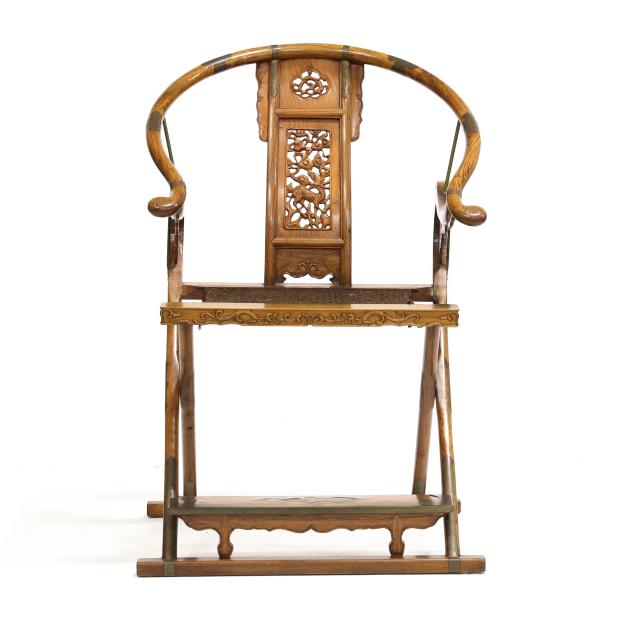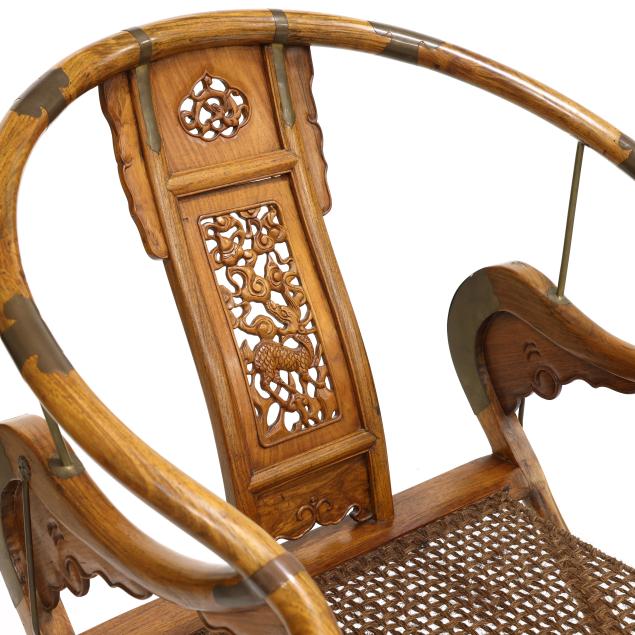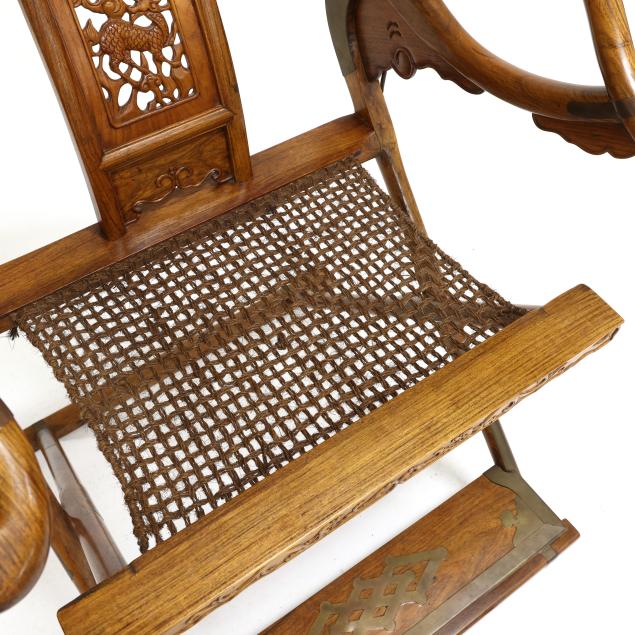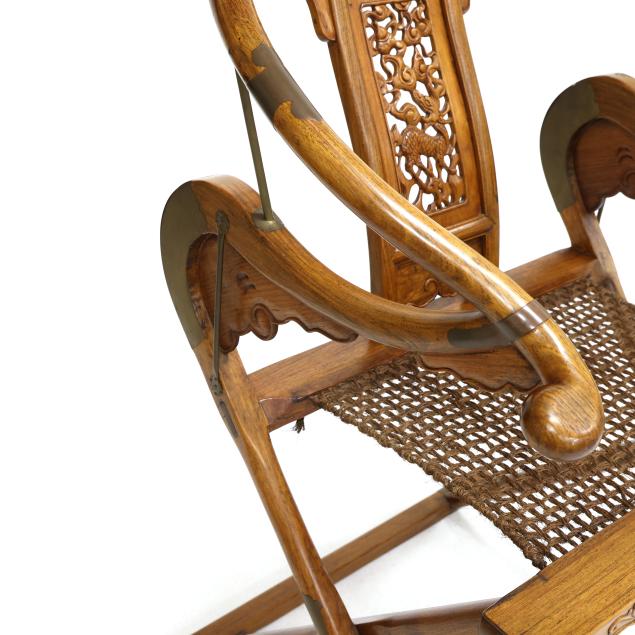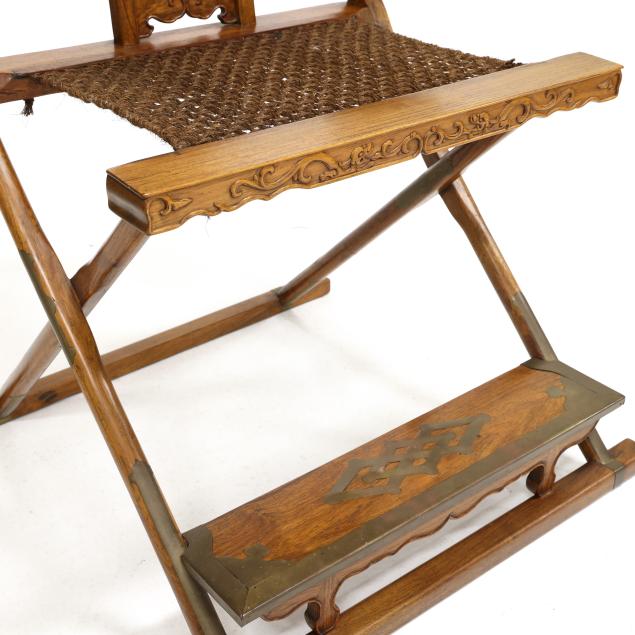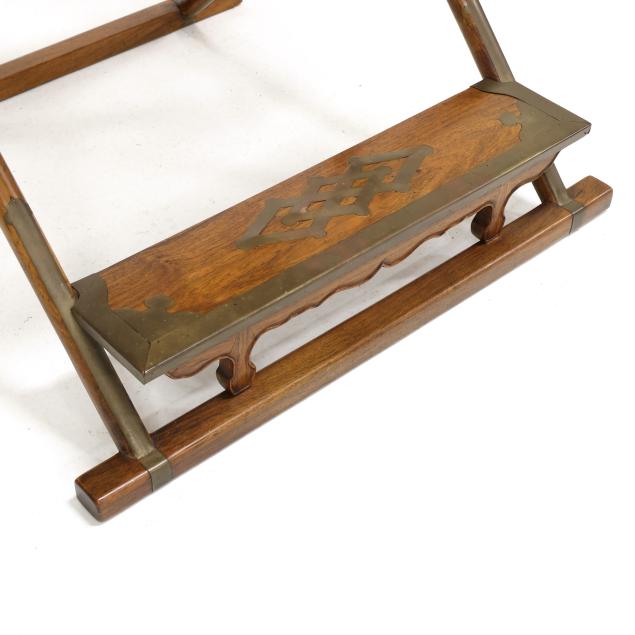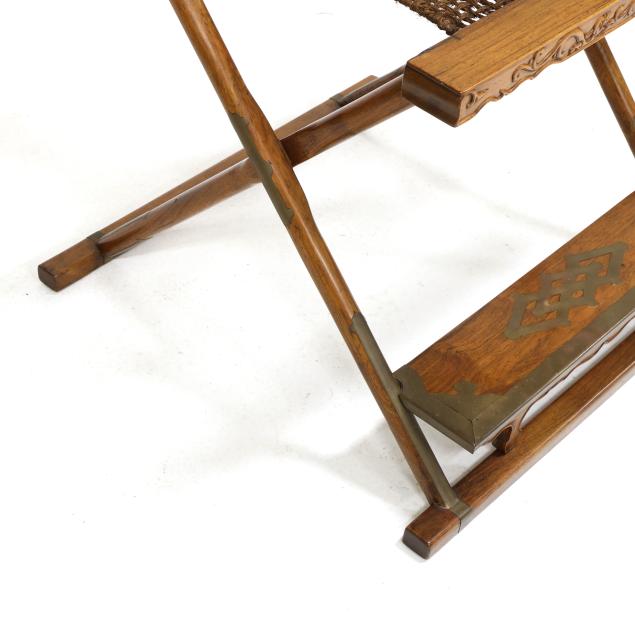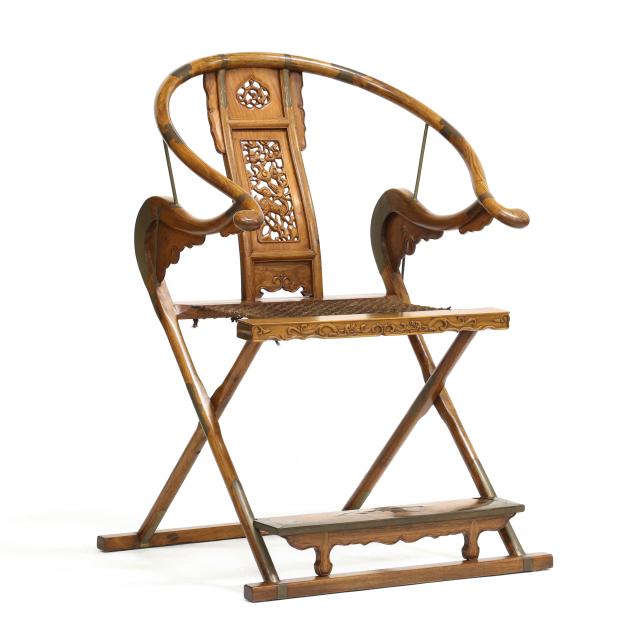
Lot 4037
A Chinese Folding Horseshoe Back Armchair Jiaoyi
Explore more items like this one.
Visit our Asian Arts Department Asian Arts
Lot Details & Additional Photographs
Purchased from Tomlinson Antique House, Bangkok in 1990s.
The folding horseshoe back armchair was traditionally used by members of the Imperial family as well as by the wealthy and powerful, serving as a symbol of prestige and social rank. This style of chair is referenced as, “the first folding chair,” highlighting its significance as the seat of highest honor in a public setting. When crafted for Imperial use, they often functioned as portable thrones, and as such, are featured in Ming and Qing dynasty court paintings as the seats for emperors and empresses. These chairs were crafted from a range of materials, including luxurious hardwoods, exemplified by the one offered here.
Very good condition; some darkening of brass fittings.
